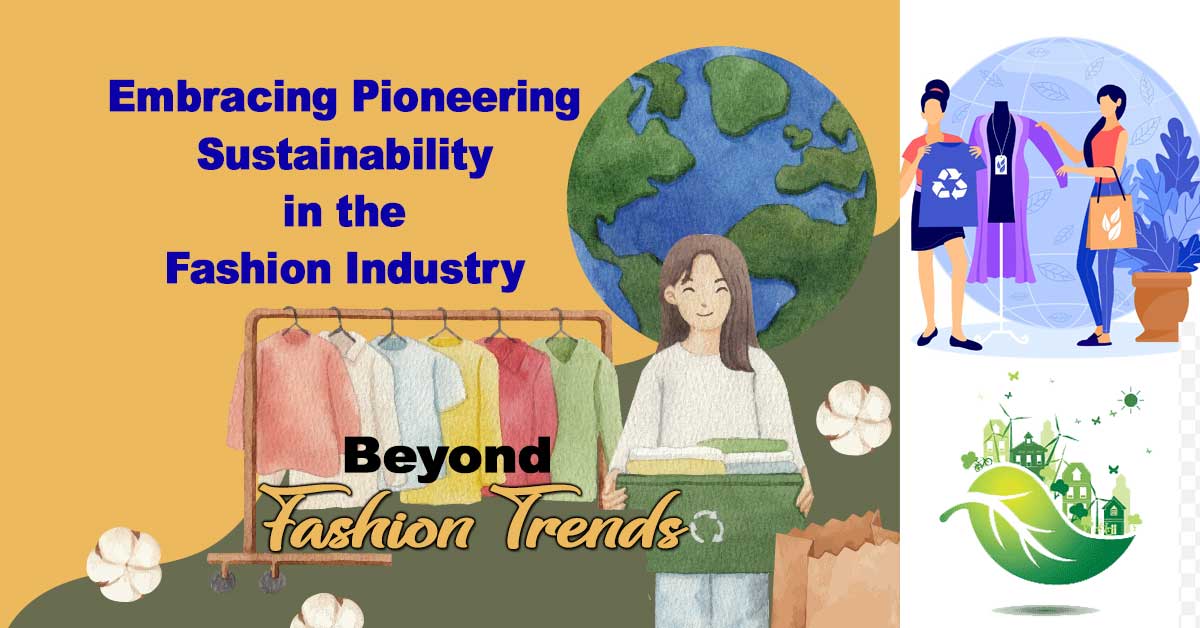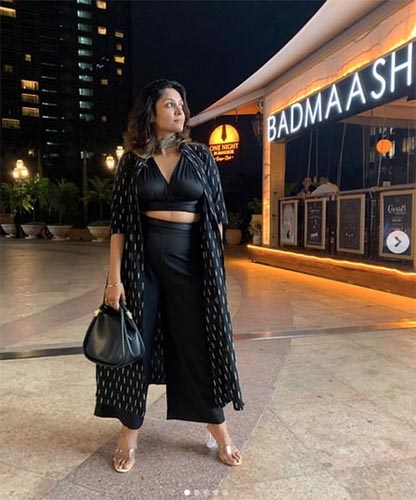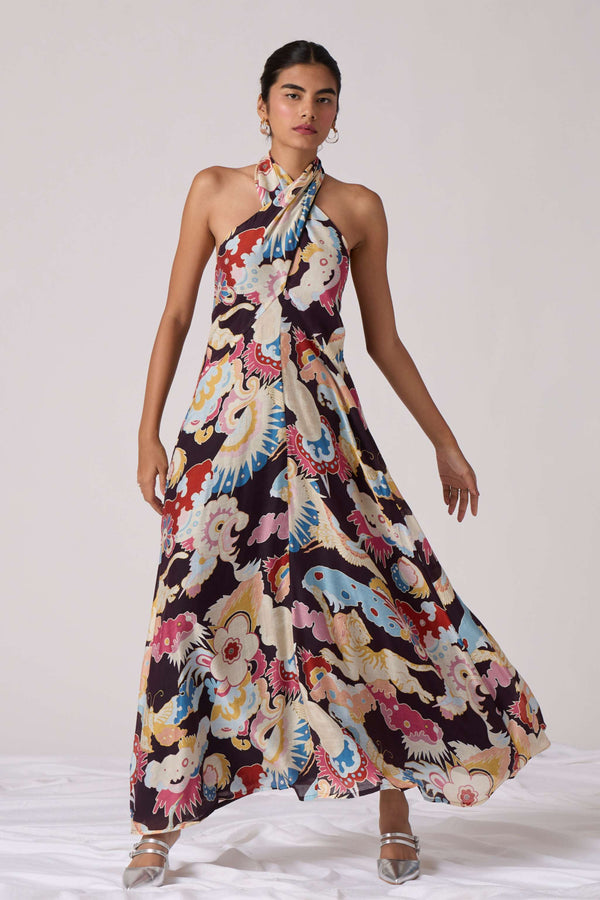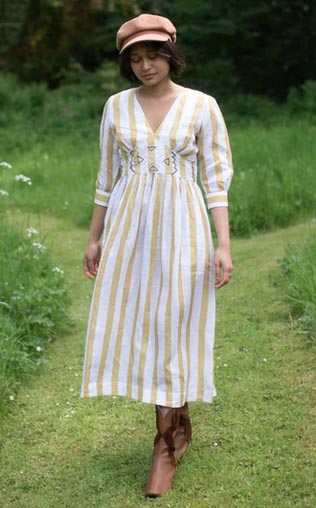You have the power to shape the future of fashion. As consumers, our buying habits directly impact trends in the industry. Sustainability in fashion resonates in our ethos. It signifies a seismic shift towards conscious consumerism. As a fashion influencer embedded in both consumer trends and corporate landscapes. I recognize the transformative power we hold.

The landscape is increasingly shaped by eco-awareness. Over 60% of individuals focus on a brand’s commitment to sustainability and eco-friendly materials. Working with a leading multinational corporation has granted me insights. My corporate working experience guides me into the intricate tapestry of consumer influence.
We explore the pivotal role consumers play in steering fashion industry towards sustainability. The fashion industry often faces criticism for its environmental footprint. The trend is for eco-friendly clothing and sustainable fashion brands in India. We have the opportunity to push the entire industry in a greener direction. Venture into the realm where the planets have scripted. A narrative of success, vibrant health, and passionate love.
As we delve into the transformative power of our choices. We embark on a journey beyond trends. Embracing pioneering sustainability as the cornerstone of fashion’s evolution.
Also Read:
- Fashion Trends 2025: Global Inspiration for Your Must-Have Looks
- How to Style a Chikankari Kurti: Diva’s Stunning Fashion Statement
- Normcore Fashion Trends 2023: Making the Mundane Marvelous
A Tragic Reality Check: The Dark Side
Around three decades ago, a significant shift transformed the fashion industry landscape. Clothing prices plummeted, trend cycles accelerated, and shopping evolved into a weekly pastime. This marked the dawn of fast fashion. Ushering in a new era dominated by global chains. That now dictate our high streets and online shopping experiences.
What is Fast Fashion: Closer Look at the Trend’s Impact
Fast fashion refers to inexpensive, rapidly produced clothing that imitates current trends. In Fast fashion clothing, designs transition from runway to retail. Capitalizing on current trends.
Fast fashion impacts the environment. It exploits garment workers and animals, and, in the end, takes a toll on consumers’ wallets.
Zara, H&M Group, Forever 21, UNIQLO, GAP, New Look, Topshop, Esprit, Fashion Nova, and Primark. They stand as prominent examples of fast fashion. These brands epitomize rapid production, quick trend turnover, and affordable, disposable clothing.
Environmental Impact of Fast Fashion: Urgent Call to Change
Before exploring sustainability in fashion, it’s crucial to become aware. One must know aboutf fast fashion’s environmental impact. Ever wondered about the cost of your closet? United Nations Environment Programme (UNEP) reveals it takes 3,781 liters of water to craft a pair of jeans, spanning from cotton production to store delivery.
We’ve attempted to highlight critical points sourced from reliable information.
- Every second, one garbage truck full of abandoned clothing
- 60% of fashion materials made from plastic
- 500,000 tons of ocean-polluting microfibers yearly
- Fashion industry’s carbon emissions exceed flights and shipping
- Potential 26% share of carbon budget by 2050
- Consumption of 93 billion cubic meters of water, equivalent to the water needs of five million people.
- The fashion industry contributes 20% of global industrial waste water pollution.
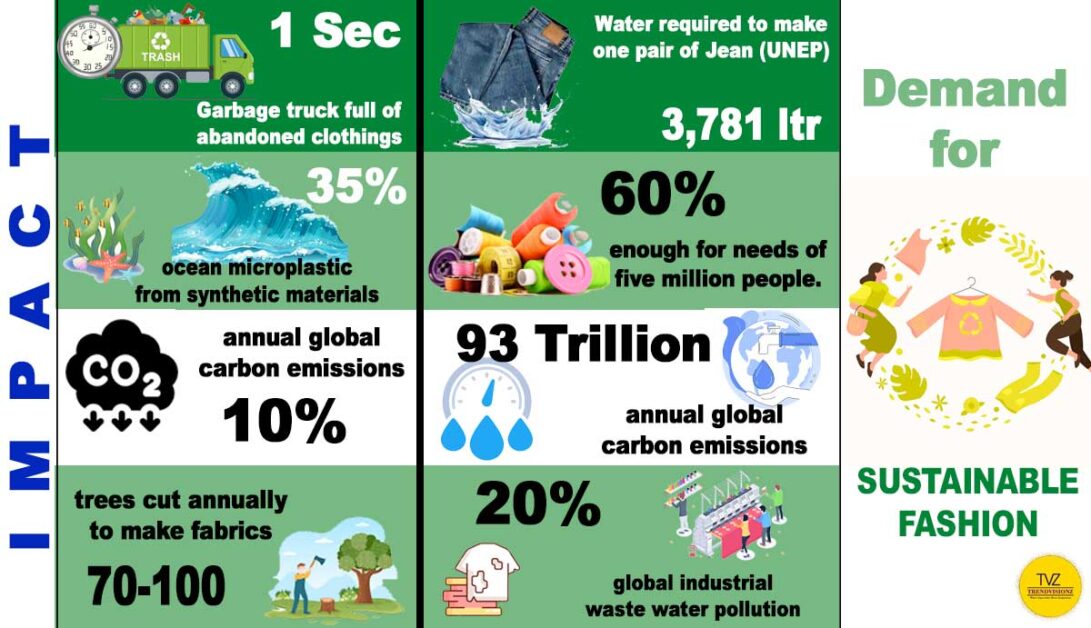
The Rising Demand for Sustainability in Fashion
India’s global employment rate is over 75 million . The market capitalization is around 2.5 trillion dollars. The fashion sector plays a significant role in our economies. The cost of fast fashion to society and the environment is astounding. Adverse effects on human rights, water consumption, carbon emissions, pollution are getting worse. Yet, there is an urgent need to switch to sustainable fashion. The voices demanding change in the fashion industry are getting louder. Consumers today want stylish and affordable clothing. But they also want sustainable and ethically made products.
The Power of the Purse
As customers, we often underestimate how much influence we wield. But the truth is, the fashion industry depends on us, and our money talks. Choose to support pioneering sustainable brands. Use your purchasing power to shape the future. Every time you buy eco friendly materials from environmental friendly brands. You’re casting a vote for meaningful change.

2024 is the time for all of us to make sustainability in fashion a priority. The big players will have to make fundamental changes for fashion sustainable. They’ll source sustainable materials, pay fair wages, and work to reduce pollution. Not because it’s trendy but because it’s what their customers want and expect. Together, we have the power to transform the industry from the inside out, one purchase at a time.
Sustainability and Fashion
The UN Alliance for Sustainable Fashion, aims to align the fashion industry with SDG. The alliance aims to reduce environmental and social impacts. Turning the fashion industry into a driver for achieving global sustainability goals.
We are truly amazed and deeply grateful for his continued endorsement. It is a testament to our shared vision. Promoting eco-friendly practices and creating a greener future. We remain committed to delivering high-quality. Environmentally conscious products. And we are inspired to innovate and contribute to the cause of sustainability.
Shri Narendra Modi, Prime Minister of India
Key players in the fashion sector hold pivotal responsibility in Sustainable Development Goals. The fashion industry (global value of $2.4 trillion), employs about 300M individuals. The growth in the industry further emphasizes the influential role these stake holders. They are driving sustainability initiatives.
If we want fashion that cares for people and the planet, consumers must lead the charge. When we demand sustainable clothing by buying eco-friendly brands, the industry listens.
The Business of Fashion (BoF) strives to foster global openness, awareness, and connectivity. BoF introduces the BoF Sustainability Index. It is a comprehensive report offering a transparent and reliable benchmark.
What sustainable fashion really means
Sustainable fashion considers the environmental and social impact of clothing. Sustainable clothing incorporates biodegradable materials made from recycled or natural fibres. Eco friendly fashion companies grow these materials. They do it without the need for fertilizer or pesticides. They require less water and energy and don’t undergo chemical treatment. All of which lower these brands’ total carbon footprints.
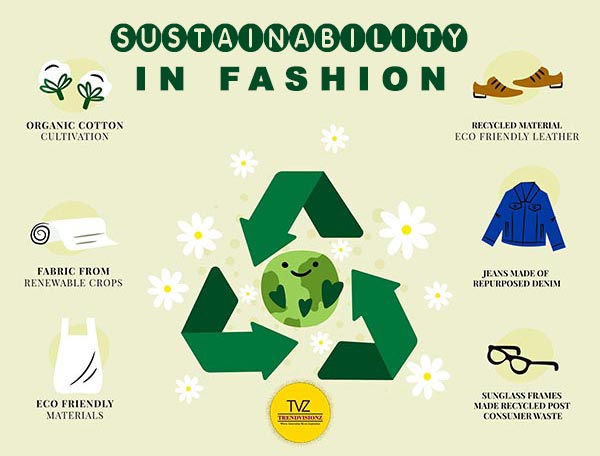
- Organic cotton and linen. Grown without pesticides, it is better for farmers and the planet.
- Recycled polyester and nylon. Made from plastic bottles and fishing nets, not oil.
- Natural dyes. Plant-based dyes reduce pollution from toxic textile chemicals.
- Fair trade. Ensures living wages and safe conditions for farmers and factory workers.
Every purchase matters. Together, we can transform the fashion industry through our environmentally friendly clothes choices. And by sharing correct information about ethical clothing on social media. Our planet and the sustainable clothing brands will thank us. It may take time, but the rewards of an ethical fashion system are priceless.
Sustainable Fashion Market Size in India
India’s textiles and garments industry contributes 5% to the country’s GDP. There is a projection that the sustainable fashion market will achieve 10.6% CAGR (2021-26). ResearchAndMarkets.com mentions growth factors. The Boston Consulting Group, predicts the sustainable fashion market in India to touch $9.7 billion by 2025. Increasing consumer awareness and willingness to pay for sustainable products will drive growth.

The sustainable fashion advocate adoption of environmentally friendly materials and production methods. Embracing the circular economy in their culture and alleviating detrimental environmental impacts. These small steps would enhance the social and economic well-being of industry.
Driving Forces Behind Sustainable Fashion in India
A notable paradigm shift towards sustainability was underscored by a Nielsen survey. The survey reveals, 85% of Indian consumers rank sustainability in their purchasing decisions.
Awareness of sustainability issues grows in India. More consumers are altering their buying habits. They are shopping for high-quality, long-lasting clothing. And are choosing natural, organic and recycled fabrics. Consumers are also pressuring companies to improve their environmental practices. Consumers are holding them accountable.
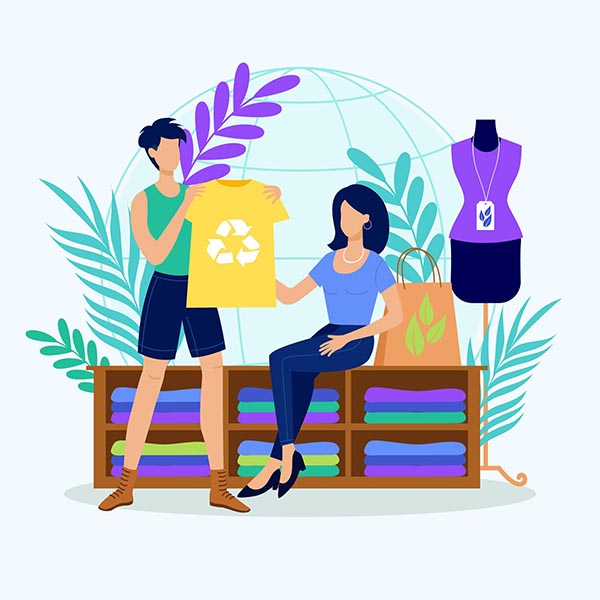
The sustainable fashion movement in India is still new but gaining momentum. Clothing brands in india are working to reduce waste. Use renewable energy, pay fair wages and create high-quality clothing that lasts. They aim to transform the fashion industry through innovation. And by putting people and the planet first.
Sustainable fashion costs more to produce. The higher prices are worth it to eco-conscious consumers. Every sale makes a difference.
Consumer Preference for Sustainable Fashion
Millennials and Gen Z in India increasingly prioritize eco-friendly and ethically made clothing. The demand for sustainability and transparency drives brands. Consumers alter buying habits for high-quality & eco-conscious choices. Consumers are pressuring companies to improve environmental practices.
Government Initiatives and Availability of Materials
Recognizing the significance of sustainable practices, the Indian government has launched initiatives. That aligns with eco-conscious fashion principles. ‘Make in India’ promotes local production, reducing the carbon footprint of imports. The Ministry of Textiles introduces schemes like ATUFS. It modernizes the textile sector with a focus on sustainability. Prime Minister Narendra Modi advocates for sustainable fashion. He showcases his commitment through choices-
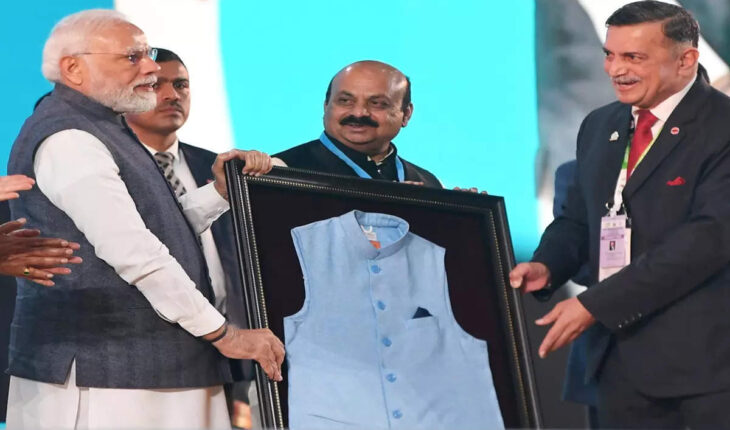
- International Forums. During the G7 Summit, PM Modi showcased sustainable fashion. He wore a recycled material jacket, emphasizing eco-friendly choices on the global stage.
- Parliament Appearance. In a notable domestic event, PM Modi made a sustainable fashion statement. He wore a sleeveless sky-blue jacket to Parliament. The jacket was a gift from the Indian Oil Corporation during the India Energy Week in Bengaluru. Made from recycled plastic bottles it underlining Modi’s commitment to eco-friendly attire.
- Khadi and Swadeshi Promotion. PM Modi prioritizes Khadi. He emphasizing its role in generating employment and achieving a threefold turnover. In 2022-23, Khadi’s Rs 1,35,000 crore business aligns with the “Vocal for Local” initiative. Promoting sustainability through self-reliance and contributing to a humane GDP figure.
The Transformative Power of Fashion Designers
Designers wield significant influence by embedding foresight in products, averting negative consequences. As storytellers, they shape ideas. Offering fresh perspectives on living. Essential in fostering new narratives and ideas for change.
Celebrity Influence on Sustainable Fashion
Indian influencers and celebrities play a pivotal role. They help in shaping consumer behaviour toward sustainable fashion. They endorse eco-friendly brands, featuring sustainable products on social media. And participate in events promoting ethical fashion. These influencers contribute to increasing awareness. And making sustainable fashion a mainstream trend.
Style influencers embrace slow fashion, inspiring followers to make the sustainable shift. Ofelia Sarkar, showcases Indian handlooms, exemplifies the vibrant and mindful essence of slow fashion with versatile sarees.”
Also Read:
Sustainable Fashion Brands in India
The fashion industry in India has seen a rise in sustainable and ethical brands in recent years. Consumers are becoming more aware of the environmental impact of fast fashion. The demand for sustainable options has skyrocketed. Beyond a fast fashion passing trend, slow fashion embodies a lifestyle choice.
Notable clothing brands in India following sustainable fashion trends now prioritize eco-friendly materials. They are also endorsing ethical production practices. Now, sustainable designers and labels are contributing to clothing made in India. That aligns with the growing conscientious consumer base.
NO NASTIES
No Nasties is a vegan clothing brand which showcases carbon neutral products. They make fun, stylish t-shirts and dresses. No Nasties manufacture Clothes using only organic cotton. Their eco friendly fabric certifies from Global Organic Textile Standard.
Their fabrics and dyes are free from harsh chemicals, bleaches, and GMOs. No Nasties raises awareness about tOrganic, upcycled, zero waste clothings. Their collection of everyday essentials for men and women . Crafted from breathable organic cotton. It features soothing herbal and all-natural dyes. One can elevate his repeat-worthy clothing. And buy these these eco-friendly essentials, perfect for both men and women.
OKHAI
Okhai endeavours to commit itself to women’s empowerment. The fashion sustainable brand’s Mission is to uplift women artisans . Hailing from underprivileged backgrounds and rural communities.
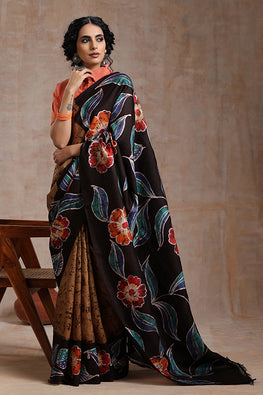
Pure Silk Saree: Nature Inspired
This brand is dedicated to providing artisanal, handcrafted and unique clothing and lifestyle products. Skilfully created by talented rural artisans spanning the entire country. Okhai’s noble cause expresses in its detailed clothing. Boasting a vibrant spectrum of colours.
THE SUMMER HOUSE
The Summer House creates dreamy boho-chic clothing from natural, sustainable materials. They use organic cotton, linen, and silk to design feminine blouses, dresses, and skirts. The Summer House values ethical production and fair wages for artisans.
Their pieces are handcrafted with care and dyed using low-impact dyes. For sustainable hot weather clothing and ethical fashion. The Summer House is a platform for purchasing and selling authenticated, secondhand clothing.
THE TERRA TRIBE
Meet The Terra Tribe, a proponent of slow fashion brands. Their collection of timeless women’s wear crafted exclusively from locally manufactured Tencel. Adorned with recycled metal trims. The brand is dedicated to delivering unparalleled quality through limited production runs.
True to its name, inspired by the Latin word for earth. The Terra Tribe showcases an earthy palette in its clothing. The dye they use in garments use sustainable methods. They use Indian madder vines, natural indigo, iron vinegar & leaves.
MAATI BY NEHA KABRA
Nestled in Udaipur, Rajasthan, Maati by Neha Kabra crafts effortlessly chic everyday essentials. The brand collaborates with local communities. Ethical made in India emphasizing sustainability, evident in its promotion of natural fiber clothing.

Eco-friendly Packaging at Maati
Maati’s packaging is eco-friendly, using recyclable cardboard, paper tapes, and corn starch bags—completely biodegradable. Handloom fabrics, utilizing minimal water and energy, dyed with turmeric, indigo & flowers. Local artisans in Rajasthan ensure fair wages and excellent working conditions.
NICOBAR
Nicobar, a conscious brand, crafts timeless clothing from organic materials. A modern, mindful, design studio from India. Collaborates with communities & reduces plastic packaging. The brand offers classic wrap dresses for a chic look.
Effortless, timeless style. From clothing to homeware, Nicobar prioritize fabrics, fit, and simplicity. Versatility, layering, and no big logos define the collection.
Sustainable fashion in India is growing, and brands like these are at the helm of the movement. By choosing eco-friendly and ethical brands, consumers can do their part. And push the fashion industry in a greener direction. Together, we can make a difference through the clothing we buy and wear each day.
Sustainable Materials and Technology
The foundation of the sustainable fashion movement is ethical production. The widespread adoption of sustainable practices, such as utilizing renewable energy. It underscores the industry’s dedication to environmental sustainability.
In clothing made in India, using environmentally friendly clothing. It is more than sustainable fashion trends. Clothing Sustainability enables you to use products that are more environmentally friendly. It is truly a step in the right direction towards running your business sustainably. Developing environmentally friendly materials that balance ethics and aesthetics. The fashion industry is rewriting the story.
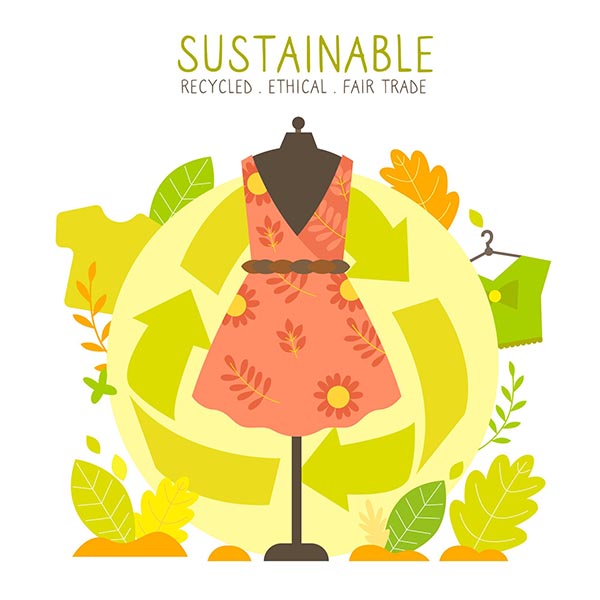
Sustainable Materials: Shaping the Future Fashion
More and more clothing brands in India are using recycled and sustainable materials. Environmentally friendly materials like organic cotton, bamboo. Hemp-recycled polyester, linen, tent, and pinatex is used for future fashion.
Organic Cotton
Made without toxic fertilizers and pesticides. It is an environmentally friendly alternative. To reduce use of traditional cotton for the sake of the planet.
Recycled Polyester
Recycled Polyster comes from waste materials and post-consumer plastic bottles. It has a smaller carbon footprint than regular polyeste. It lessens waste and its impact on the environment.
Hemp
It is a hardy and sustainable textile. Hemp uses less water and pesticides than other crops. It has antibacterial qualities. Hemp is an excellent alternative for clothing and other stylish items.
Linen
Made from the stems of the flax plant. It yields fibres that are sustainable, absorbent, and perfect. Application of Linen is for fine apparel and home furnishings. Linen known for its strength, resilience, and inherent beauty.
Tencel
It is a biodegradable fabric with less environmental impact. Made from sustainable beech wood and Tencel has remarkable nano-fibril structure. It also has absorbency, and smooth surface.
Pinatex
It is a repurposed pineapple by-product. Pinatex uses leaf fibres to create an affordable, eco-friendly leather substitute. It minimizes waste.
Bamboo
It is a water-efficient, quickly-growing plant that produces breathable, moisture-wicking fabric. Bamboo is ideal for a variety of clothing.
Sustainable Fashion: Redefining Style with Ethical Design Practices
Embracing sustainable practices is a conscious, transformative lifestyle. The commitment to ethical design encompasses various facets,. Each contributing to a more eco-conscious industry.
Innovative Technology in Sustainable Fashion
Advancements in technology are revolutionizing clothing production and fostering sustainability. Techniques like laser cutting, ultrasonic welding, and seamless knitting. It minimize waste, while 3D printing and digital printing reduce water and dye usage. These cutting-edge technologies demonstrate a harmonious blend of sustainability and style. Supporting brands that embrace these innovations empowers consumers to drive further positive change.
Together, we can pave the way for a greener future in fashion.
Circular Fashion Economy: A New Era in Design
The circular economy in fashion transcends trends, aiming to revolutionize clothing lifecycles. It aspires to create sustainable loops, minimizing waste and maximizing value. Designing for longevity lies at its core. This shift promotes opportunities for ethical clothing manufacturers to awarded. They get recognition for their valuable contributions.
Circular Design Triumph: CDC India’s Premier Sustainable Fashion Award
WITHOUT™ by Ashaya secured victory at the Circular Design Challenge. CDC is India’s foremost sustainable fashion accolade. The event, a collaboration of R|Elan, the UN, Lakmé Fashion Week, and FDCI. It celebrates designers championing circularity in their creations.
The heart of what we do is circular. We’re focused on using waste and increasing the value of that waste. Design comes later and is only a tool for us.
Anish Malpani, the founder of Ashaya
Upcycling: Crafting Wearable Art from Waste
Upcycling or creative recycling breathes new life into existing garments. It transforms them into unique, value-added pieces. Celebrating individuality and craftsmanship, this process extends the usability of clothing. Reducing the need for new production. Fashion designers now use upcycling as a form of creative expression. In 2024 and beyond, there will be a growing movement. One toward personalized and sustainable wardrobes.
Sustainable Textile Materials: Weaving a Sustainable Narrative
Sustainable materials, such as organic cotton, recycled polyester, and bamboo, goes beyond trendiness. It signifies a stride toward an eco-friendly fashion paradigm. These materials reduce negative environmental impacts. And also contribute to clothing quality, innovation, and comfort.
Renewable Energy: Sustainable Power for Fashion’s Future
Utilizing renewable energy sources is a crucial step in sustainable fashion practices. Powering manufacturing, distribution, and retail operations with clean energy. And fostering a more sustainable future with wind, solar and hydroelectric power. Thus promoting a greener tomorrow.

Sustainability Initiatives and Collaborations
The fashion industry collaborates with sustainability experts and environmentally-focused brands. It is critical to pioneer a substantial change. Some brands have paired up with organizations. The aim is to improve the environmental and social impact.
Fashion Industry’s Sustainable Initiatives:
- Stella McCartney has collaborated with Parley for the Oceans. Utilizes recycled ocean plastics in designs, demonstrating a commitment to environmental responsibility.
- Gucci’s “Gucci Equilibrium” Platform. Partners with UNICEF, Global Citizen, and the Good Planet Foundation. To spearhead social and environmental initiatives.
- Kering’s Fashion Pact Initiative. Unites over 60 global fashion and textile brands. Establishing shared objectives for reducing environmental impact and promoting sustainability.
Sustainable Textile Innovations:
Mills and textile companies are working directly with brands on sustainable textile innovations.
- Canopy’s “CanopyStyle” Initiative. Collaboration with brands like H&M Group, ASOS, and Levi. The aim is to develop sustainable viscose using alternative materials and closed-loop processing.
- Newlight Technologies Biotech Company. Creates eco-friendly materials from greenhouse gas, showcasing innovation in sustainable material production. Newlight Technologies partners with Dell, Sprint, and furniture brands like Teknion. Illustrating the potential for sustainable partnerships across diverse industries.
Legislative changes and policy interventions are still needed. Collaborations between influential brands, sustainability experts and innovators could transform the broader system.
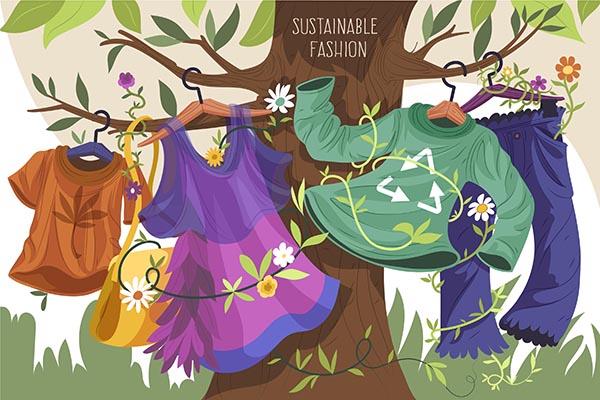
There is a cross-industry alliances and knowledge sharing on environmental and social impact. This could accelerate the fashion industry’s transition to long-lasting sustainability.
Rising Consumer Awareness and Trends in Sustainable Fashion
Empowered by knowledge, fashion becomes both influential and chic. Informed consumers are reshaping the industry. Advocating for sustainable sourcing, ethical practices, and genuine transparency. The fashion landscape today resonates with the principles of conscientious shoppers.
The consumers have the power to influence real change. We are casting our vote for the greener future we want to see.
Shaping the Shift
As India evolves, consumers are increasingly attuned to sustainable fashion. Social media plays a pivotal role in shaping awareness and influencing preferences. Analyzing this shift reveals:
- Evolving Preferences: Indian consumers lean towards eco-friendly choices.
- Social Media Impact: Platforms drive awareness, influencing fashion decisions.
- Growing Consciousness: Sustainability becomes a critical factor in purchasing decisions.
- Local and Global Trends: Alignment with both local and global sustainable fashion movements.
- Educational Initiatives: Awareness campaigns and educational efforts contribute to informed consumer choices.
Challenges and Future Prospects: Sustainability in Fashion
The Indian sustainable fashion industry encounters hurdles. As it strives for a greener future. The future looks bright. Key challenges include:
- Supply Chain Complexity: Integrating sustainable practices across the supply chain.
- Consumer Education: Bridging gaps in consumer awareness and understanding.
- Cost Implications: Balancing sustainability with affordability poses a challenge.
Though the road ahead isn’t easy, pioneering brands and consumers are leading the way. Forward-thinking companies are investing in new materials and technologies, reimagining the design process. Amidst challenges, promising prospects emerge:
- Innovative Technologies: Adoption of eco-friendly technologies.
- Collaborative Initiatives: Industry collaborations to drive sustainable practices.
- Market Expansion: Growing demand propels the market.
- Policy Support: Government policies fostering sustainable initiatives.
The future of fashion is sustainability. The challenges are many, but so are the opportunities for innovation and impact. Thrust is toward navigating these challenges. Capitalizing on prospects positions the Indian sustainable fashion industry for robust future growth.
Case Studies and Success Stories
Some brands are embracing sustainability through innovative practices and forward-thinking leadership.
- Patagonia’s Mission. Provide the greatest product possible. Avoids doing needless harm. And let industry lead the way in finding solutions to the environmental challenge.
- Eileen Fisher’s Approach. Sustainable fibres, eco-friendly dyes, and a return program promoting circular fashion.
- Luxury Shift. Stella McCartney‘s cruelty-free collections.
- Gucci’s Pledge. To reduce environmental impact, and Kering’s sustainability standards for all its brands.
GrassRoot: Cultivating Sustainable Fashion
GrassRoot by Anita Dongre transcends fashion by weaving sustainability into its core. From empowering rural women to eco-conscious design. It’s a testament to people and planet commitment.
Key Points:
- Sustainability Focus. GrassRoot incorporates sustainability into business practices, striving for energy efficiency and resource repurposing.
- Empowering Rural Communities. Anita Dongre’s initiatives uplift rural women and artisans. Fostering economic opportunities within their hometowns.
- Planet-Friendly Headquarters. The Navi Mumbai design hub operates in an eco-conscious building. Reducing energy consumption and carbon footprint.
- Conscious Fabric Sourcing. GrassRoot consciously selects bio-degradable fabrics from companies dedicated to renewable resources.
- Plastic Recycling Pioneer. Anita Dongre’s House leads in comprehensive plastic waste management. Partnering with Lucro Plastecycle Private Limited.
- Textile Waste Management. The Anita Dongre Foundation collaborates with organizations like Goonj and NEPRA. To ensure sustainable employment for women and effective textile waste management.
Zara Sustainable Triumph: A Green Fashion Frontier
Zara’s commitment to sustainability transcends fashion, incorporating circularity services like Zara Pre-Owned. With a ‘Worker at the Centre’ strategy, Zara empowers 3 million people in its supply chain.
Key Points:
- Environmental Stewardship: Zara’s measures to reduce carbon emissions, energy consumption, and waste.
- Ethical Sourcing: Strict adherence to labour standards, fair trade, and supplier audits.
- Sustainable Choices: Initiatives like garment recycling, eco-friendly product lines. And the “Closing the Loop” program.
- Innovative Strategies: Adoption of sustainable materials, 3D printing, and laser technology.
- Circular Economy: Goals to recycle 100% of textile waste and explore rental services.
- Collaboration: Partnerships with external organizations NGOs, and encouragement of sustainable practices.
- Challenges: Balancing speed and sustainability, supply chain complexity, and consumer awareness.
- Recommendations: Enhanced transparency, strategic partnerships, and consumer education.
Zara’s sustainable practice journey marks by challenges and triumphs. It sets a new benchmark for sustainable practices in the fashion industry.
Everything connected with sustainability is a work in progress
Pablo Isla, Executive Chairman, Zara
While the industry still has a long way to go. These success stories show that pioneering sustainability is possible. When brands make it central to their Mission and values. Consumers can support these efforts. By choosing eco-conscious brands, mending and reselling clothing, and embracing minimalism. Together, we can shape a greener future for fashion.
India’s Global Impact: Sustainability in Fashion
India is spearheading sustainable fashion. Paving the way for a greener future with a global impact. India stands as a prominent global hub for textile and apparel sourcing, attributed to its abundant supply of raw materials and a skilled workforce.
The country’s fashion industry, contributes 8.5% to the world’s textile waste annually. It holds immense potential for driving sustainability on a global scale. Beyond its vibrant designs, India stands as beacon of eco-consciousness and ethical practices.
- Comparative Advantages. Indian Fibre crops and textiles, envisions a $190 billion fashion industry by 2025-26. Globally, it stands as the second-largest textile exporter. With a 7% share and the sixth-largest apparel exporter with a 3% share.
- Massive Employment. Direct employment for 45 million individuals. The sector is pivotal in India’s economic landscape. Employing over 21% of the nation’s total workforce.
- Textile Waste Footprint. India’s fashion industry contributes significantly. Accumulating 8.5% of the world’s textile waste annually. Emphasizing the urgency of sustainable practices.
- Global Growth Impact. The sustainability drive transcends borders. Reflected in India’s textile and apparel exports reaching $43 billion in 2021-22. Growing at a 3.7% CAGR since 2010-11. India secures the fourth position globally. Contributing a 5% share of the export market.
In essence, India’s influence in sustainable fashion extends far beyond its borders. Shaping a global narrative of environmentally conscious and ethically driven practices.
Also Read:
- Indian Fashion Trends 2023: Bollywood makes a Statement
- The Ultimate Milk Debate: What Type of Milk is Recommended For Adults
- Born to Be a Billionaire: This Zodiac Sign Rules the Rich List
FAQ: Sustainability in Fashion
Why is fast fashion bad?
Fast fashion prioritizes profit over sustainability. Causing environmental harm, worker exploitation, and excessive waste. The focus of the Fast Fashion Industry is on rapid trends. One that contribute to ethical and environmental issues.
What is your definition of Sustainability in Fashion?
Fashion sustainability means fostering ecological integrity and social quality. Through products, practices of use, and relationships within the fashion industry.
What’s the biggest misconception about sustainable fashion?
The myth is that it’s solely about materials and technology. In reality, sustainable fashion encompasses behaviour, relationships, and mindset shifts.
Conclusion
So there you have it. The Sustainability in fashion meaning is evident. The Indian fashion industry isn’t merely progressing. It’s advancing, marked by a clear sense of purpose and unwavering determination.
As consumers, we have more power than we realize to shape the future of fashion. Not accepting whatever trends are thrown our way. We can choose to support brands pioneering sustainable practices. And push the industry as a whole to do better. Together, through the choices we make and the conversations we have. We can turn sustainability in fashion from a fleeting trend into the norm.
It all starts with changing our mindsets and behaviour. Ensure the clothing you already own is well-maintained. Be more conscious of your purchases. And buy less overall!
If we all do our part for people and the planet, we can make a big difference together!
The time for change is now, and the future of fashion depends on you. What will you choose to support?
Our Digital Imprints:
Social Media Influencer:Trendvisionz – A Premier Digital Marketing Agency in India
Get Connected to us with our Newsletters-Transforming Lives… Creating the magic. Just – Believe ~ Practice ~ PerformBizTech Chronicle… Navigating Tomorrow’s Tech Frontiers 🚀
Join my LinkedIn Group: Digital Marketing, Content Creation World Group
Follow me on Twitter or LinkedIn. For More Such Article subscribe to Trendvisionz!
